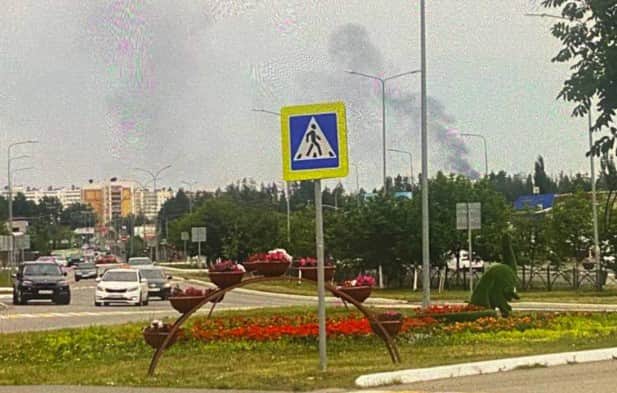In Tatarstan, accusations of drone attacks have once again been voiced, which, according to local authorities, targeted strategic facilities in the region

The President of Tatarstan, Rustam Minnikhanov, officially stated that on the night of June 10, drones from Ukraine carried out an attack on the Elabuga industrial site, where production of strike drones of the "Shahed" type is established. This incident occurred within the context of a months-long series of drone strikes on strategically important targets in Russia, including in Tatarstan, indicating increased tensions surrounding the production of combat drones in the region. According to Minnikhanov, during the operation to neutralize the hostile drones, debris from one of the aircraft fell on the territory of the car plant checkpoint within the Elabuga district. A fire broke out at the site, which has since been extinguished. An official representative also reported human casualties: one worker was killed, and 12 others received various injuries. It is known that among the injured were both plant employees and local residents. Sources of "Meduza" report that the first videos of the fire at the Alabuga Special Economic Zone have already appeared on social media; this zone is located nearby and is one of the centers of defense infrastructure development in the region. The footage shows thick smoke rising from the areas of the Aurus and Sollers automobile plants, as well as evacuation activities conducted at local enterprises. According to employees, including those in local chat groups, evacuation of workers is ongoing due to increased danger. It is significant that one of Russia’s main military factories for producing "Shahed" strike drones is located near Yelabuga. Built in 2023 within the Alabuga special economic zone, this facility suggests an escalation in regional defense manufacturing and reflects heightened tensions and potential for further escalation of Russia’s military capacity. Background tension in the region points to the systematic use of kamikaze drones for targeted attacks. Since April 2024, Alabuga has been targeted by drone attacks from Ukraine—this is not the first such event. The most extensive attack took place in April this year, when several drones were shot down or aimed at regional targets. On the night of June 10, Russian authorities reported a renewed large-scale attack, during which multiple explosions and fires occurred in Nizhnekamsk and Yelabuga, likely caused by Ukrainian "Shahid" type combat drones. This series of tense provocations indicates an increased operational tempo and expansion of drone production in the region, demonstrating Ukraine’s ability to use advanced means to strike deep into Russian territory. Observers emphasize that such attacks are not only tactical but also symbolic: Ukraine seeks to intensify pressure on key Russian defense industry facilities. Overall, the situation in Tatarstan remains tense. Official statements are supported by videos and testimonies from local residents, while the international community is increasingly watching the developments surrounding the escalation in the region. At the same time, Russian and Ukrainian experts discuss the possibilities and prospects for the conflict’s development in the context of drone warfare and its impact on the defense strategies of both sides. Against this backdrop, it is evident that the production and use of strike drones in Ukraine and Russia are transforming the modern conflict to a new level of technological and tactical warfare, making it difficult to predict what further escalation scenarios might unfold in the coming months.

